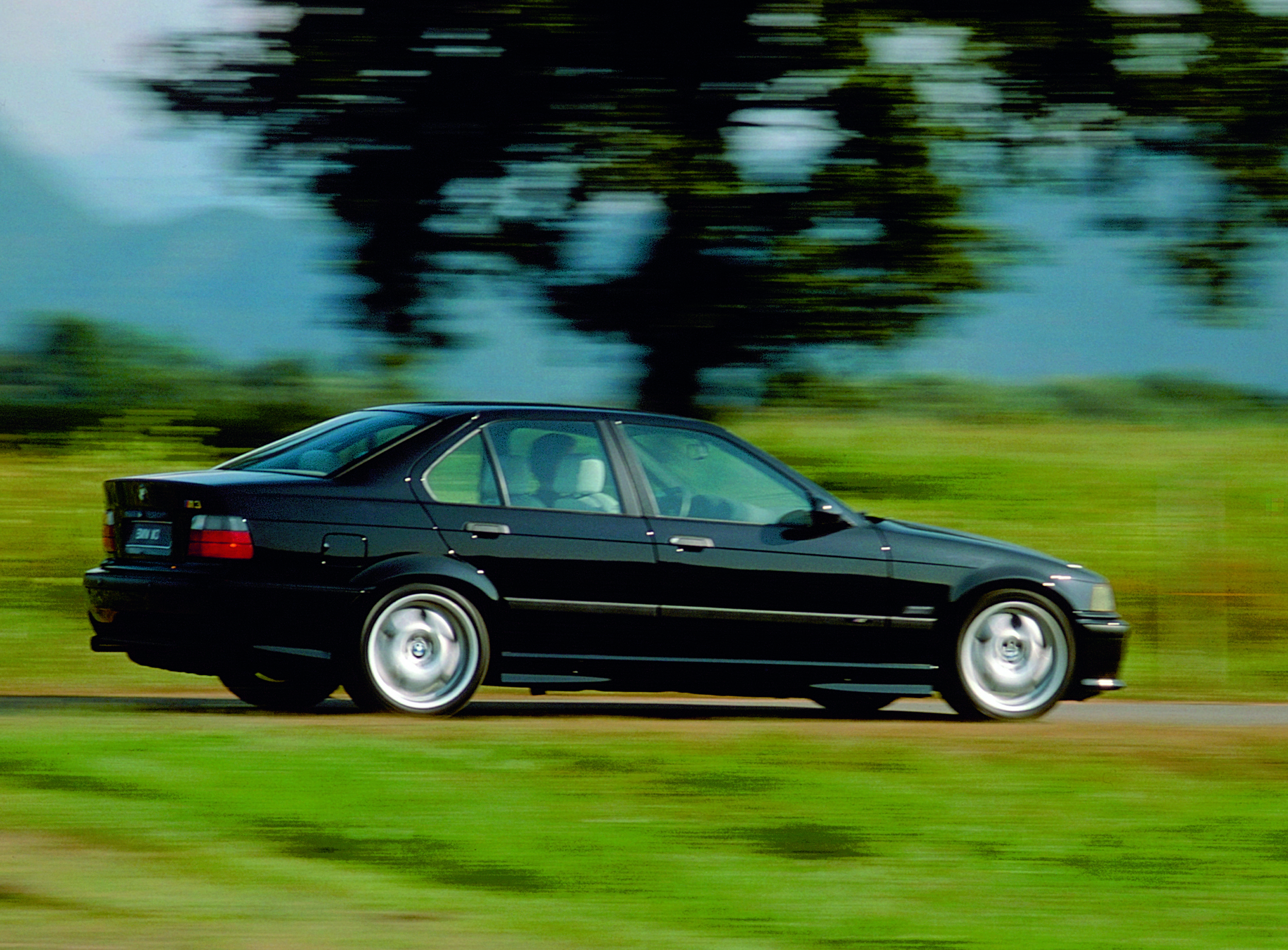Photography courtesy of BMW
It’s like he was born for this moment, the DTM championship had eluded him four times since 2006. Rarely do drivers put themselves in a situation to win so many times, only to have it slip away at the last second. Whether the result of bad luck or technical error, Bruno Spengler’s journey has been dedicated to his goal of being at the top. Raising his arms in triumph, his 2012 DTM season was a microcosm of his career to date. His hard work has finally paid off as he pumps his fists and claims DTM glory.
Spengler is one of those guys who just loves to go fast. It started when he was young, sitting in the back seat of his parent’s car, urging his dad to go faster and pass cars left and right. Really, he was just like any young boy who loved the thrill and excitement of going fast. But he had a passion for more than just speed – he loved cars too.
“I was always talking about cars. I knew all the makes and models from a young age, so I was already flat-out into cars and racing,” Spengler said. “I was crazy about them. My mom tried to get me in to a number of sports; I tried tennis, golf, rugby and soccer, but the only thing that I wanted to do was race. It was the only thing I thought about.”
Born outside of Strasbourg, France, but moving to Quebec when he was just a few months old, racing wasn’t the easiest or most common thing for a young boy to get into. The talent wasn’t often the cream of the crop, the season was short and the cost to field a car was a significant investment.
Still, Spengler’s desire to go fast prompted his parents to explore karting after his other sporting endeavors didn’t match his enthusiasm.
Bruno’s father Alexis was no stranger to motorsport, so he had some familiarity in getting his son into racing. Having grown up in Switzerland as an avid DTM and Grand Prix racing fan, Alexis purchased a black BMW E36 M3 around the time Bruno began karting. It was Bruno’s favourite car growing up. When his parents enrolled him, neither of them foreshadowed what was to come, they simply wanted Bruno to do what made him happy.
“He played soccer and tennis, but after one year he wanted to enter into a racing series,” his father said. “We thought it was just for fun, but he performed extremely well. So we went ahead and he continued to do well, so it didn’t make sense to stop.”
Finishing near the top of the Quebec mini kart series in his first two seasons, Spengler continued at a pace that saw him quickly outgrow his competition. By age 12 he was already commuting to and from Europe for race weekends; his parents often trading travel duties depending on their work schedules. For extended periods in Europe, Spengler would stay at his grandmother’s house for weeks at a time and return to Canada between races.
It surely wasn’t what most kids were doing at his age, but Bruno’s maturity even at 12-years old was always directed toward doing well and challenging himself to the fullest.
“I was learning a lot there,” he said. “I started racing in Europe to get some experience and compete against the best drivers, get seen by a manufacturer and find sponsors – this was very important to me. It wasn’t always easy to combine it with school, but I’m happy I did because it gave me a lot of useful experience.”
And it paid off. At just 16 years old, Spengler was ranked third in North America, fifth in France and 16th in the World Cup overall standings. The following year in 2000 he dominated the field, taking both the French Formula A and Super A karting Championships. His steady incline rewarded him with a seat in Formula Renault 2000, a perennial step into the world of professional racing.
Relying on the financial support of his parents and sponsors, Spengler was able to secure a top 10 finish in his first Eurocup season. In 2002, he finished eighth in the standings with Jenzer Motorsport, three positions back from Lewis Hamilton. He combined that with a Championship in North American Formula Renault and a second place in German Formula Renault.
His standout performances caught the eye of a number of teams and manufacturers, including Mercedes-Benz, which offered him a coveted Junior Driver position and a ride in Formula 3’s top-tier Euroseries with the French ASM team in 2003.
The move not only provided Spengler with his best chance to race professionally, it also alleviated the pressure he faced hunting down financial support, which had become a much bigger issue since his move from go-karts into cars.
“I really have to thank my sponsors and my parents,” he says. “They invested all they could and without them I wouldn’t have gone anywhere.”
Moving into the premier feeder series, Spengler was up against stiff competition. In the previous year, former Marussia F1 and current BMW DTM driver Timo Glock finished third in the German F3 series, Mercedes F1 driver Nico Rosberg won the German Formula BMW Championship, WEC driver Lucas di Grassi finished second in the Brazilian Formula Renault Championship and former F1 driver Robert Kubica finished one place ahead of Spengler in the Formula Renault Eurocup series.
But before he was even able to take part in his first race, Spengler was involved in a spectacular pre-season crash that threatened to end his chance at racing stardom.
“I was very depressed when I broke my back in 2003. The doctors told me I wouldn’t be able to race for six months,” he said. “It was my first year as a Mercedes Junior Driver and I thought that by the time I healed my place would be taken by someone else.”
His parents have seen other drivers involved in dangerous and even fatal collisions, so it was only warranted when they asked if he wanted to continue racing. Without flinching, Spengler began strength and rehabilitation training daily and, within three months, he was out of the hospital.
“My only motivation was to get back in the car as soon as possible. I never thought, ‘Is this the right thing to do because it’s dangerous?’ No. When I was back racing I was the happiest guy on earth.”
He returned after missing the first six rounds of the season and surprised everyone by finishing third in only his fourth race at Le Mans (Bugatti) and again at Zeltweg. He showed no signs of being battered, finishing 10th in the standings and completing the remaining 14 rounds.
In 2004, Spengler moved to Mücke Motorsport alongside Robert Kubica, where the two traded races back and forth. Both drivers failed to secure a win during the season, but Spengler’s consistency awarded him a DTM test at Hockenheim with Mercedes. His driving impressed everyone in attendance and he was signed to Persson Motorsport to drive the C-Class for 2005.
“My only motivation was to get back in the car as soon as possible. I never thought, ‘Is this the right thing to do because it’s dangerous?’ No. When I was back racing I was the happiest guy on earth.”
He had his work cut out for him in a season that included Le Mans legend Tom Kristensen, Mika Häkkinen, Jean Alesi, Heinz-Herald Frentzen, Alan McNish and multiple DTM winners Gary Paffett and Bernd Schneider. Even driving a year-old car, he managed a number of points finishes, including the fastest qualifying lap in Istanbul.
His performance thoroughly impressed the Silver Arrows brass, so much that in 2006 Spengler found himself surrounded in an all-star cast with the heralded AMG team. Häkkinen, Schneider and Jamie Green flanked the Canadian in what would be the biggest breakout season of his career. He took four victories, including his first wins at Norisring, Nürburgring, Le Mans and Hockenheim. He finished just nine points behind teammate and five-time champion Schneider for the Championship, but doubled him in wins. For most drivers, that could be considered a dream season in a number of ways. For Spengler, he just wanted the title.
Spengler’s third season saw him take second place again, leading the way for his team with consistent finishes and missing out on the title by just three points to Mattias Ekström. Bruno would again be disappointed in 2008 and 2009, although his strong performances still placed him in the top five.
2010 and 2011 showed that the Canadian hadn’t lost his desire to win. The Championship battle was tight between himself and teammates Paffett and Paul di Resta. Di Resta pulled off a string of victories in the last third of the season to take the title, edging out Paffett and Spengler by just four and five points, respectively. In 2011 Spengler’s season was split by polar opposite halves and bad luck. Winning twice and finishing strong in the first five races, he earned minimal points in three of the five remaining races.
While most drivers would be discouraged after missing out on victory as many times as he did, Spengler saw his results as a culmination of events outside of his control.
“I was very unlucky in each of those four years, but I was always close to the Championship. I had some technical problems, which cost me a lot of points through the season, so that was hard, but we had good performances and always had a chance of winning the title. We still won a lot of pole positions and races.”
Enter BMW Motorsport for 2012.
Exactly 20 years removed from their last race in DTM, Team Schnitzer principal Charly Lamm (pictured, above) and his squad returned with the BMW M3 in an attempt to repeat their 1989 DTM Championship. An experienced team, Schnitzer motorsport left DTM only to win titles at the 24 Hours of Le Mans, the 24 Hours of Nürburgring, the 24 Hours of Spa-Francorchamps, 12 Hours of Sebring and the GT class title in the American Le Mans Series in 2001, among many others. Expertly qualified, to say the least.
Taking on the challenge of the new 2012 DTM regulations, the team’s entry into the Championship could not have happened at a better time. Not only were the 2012 cars vastly different from the previous versions; each model from Audi, BMW and Mercedes-Benz were almost identical in formula and structure – think of it as the German NASCAR CoT.
Each manufacturer was responsible for key components in each car: Audi took care of the driveshaft, transaxle and half-shafts. BMW developed the steering, fuel and electronics systems, while Mercedes-Benz developed the carbon fiber monocoque and steel roll cage. Each engine was developed by their respective manufacturer, but held to strict regulations.
With BMW Motorsport taking car of car developments and manufacturing, the team was left to conduct track and driver testing. When word arose that Spengler was looking for a new ride in 2012, BMW quickly signed him as part of its new program. He came in for testing and the team was immediately impressed.
“We had a good feeling about him; the way he worked, the way he judged the car, the way he gave input to the team – I’m even tempted to say led the team – but also his down-to-earth mentality,” Lamm said. “As a person he’s always calm, controlled and relaxed. He spoke German very well and integrated with the crew in just one test in 2011, it was a very positive thing.”
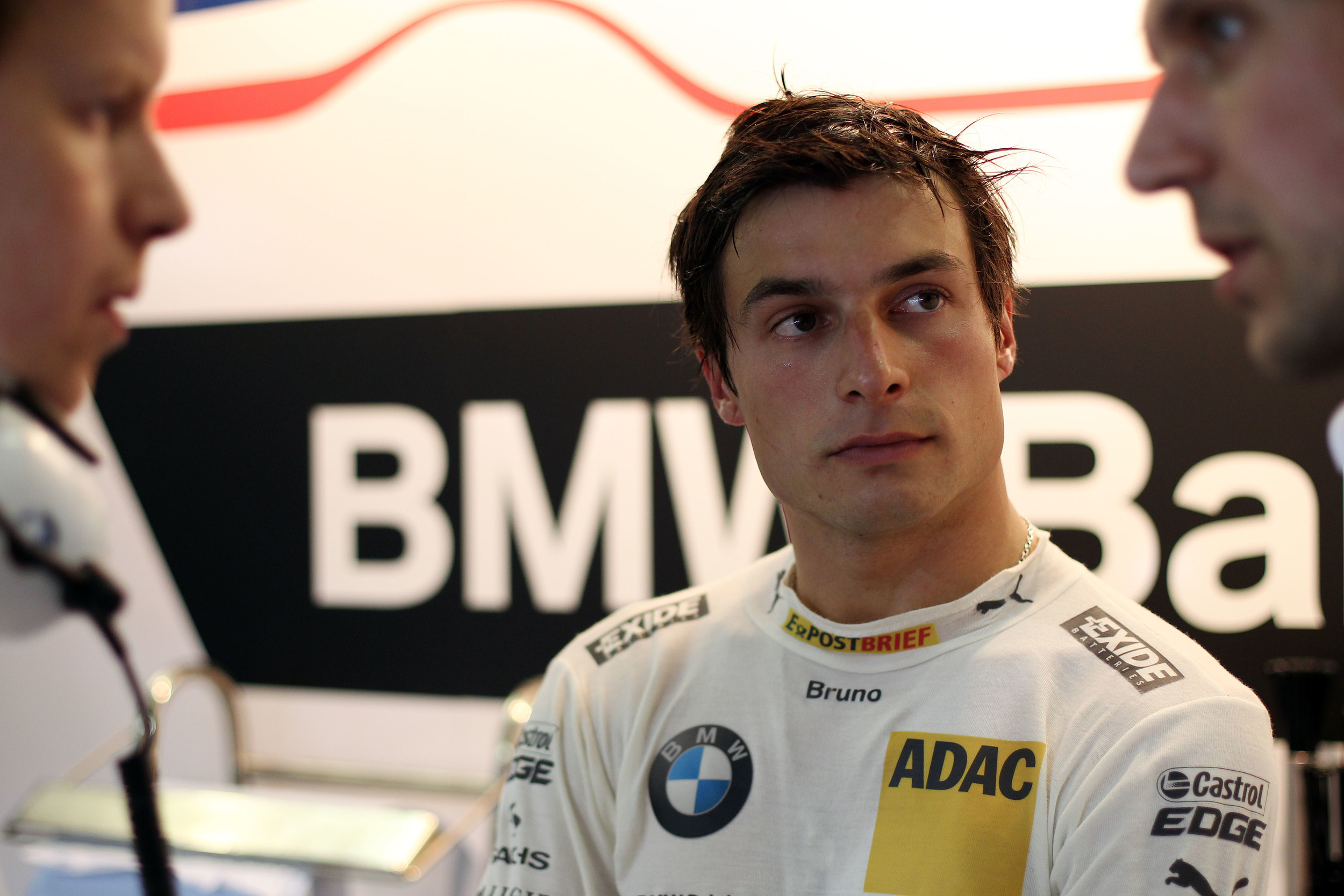
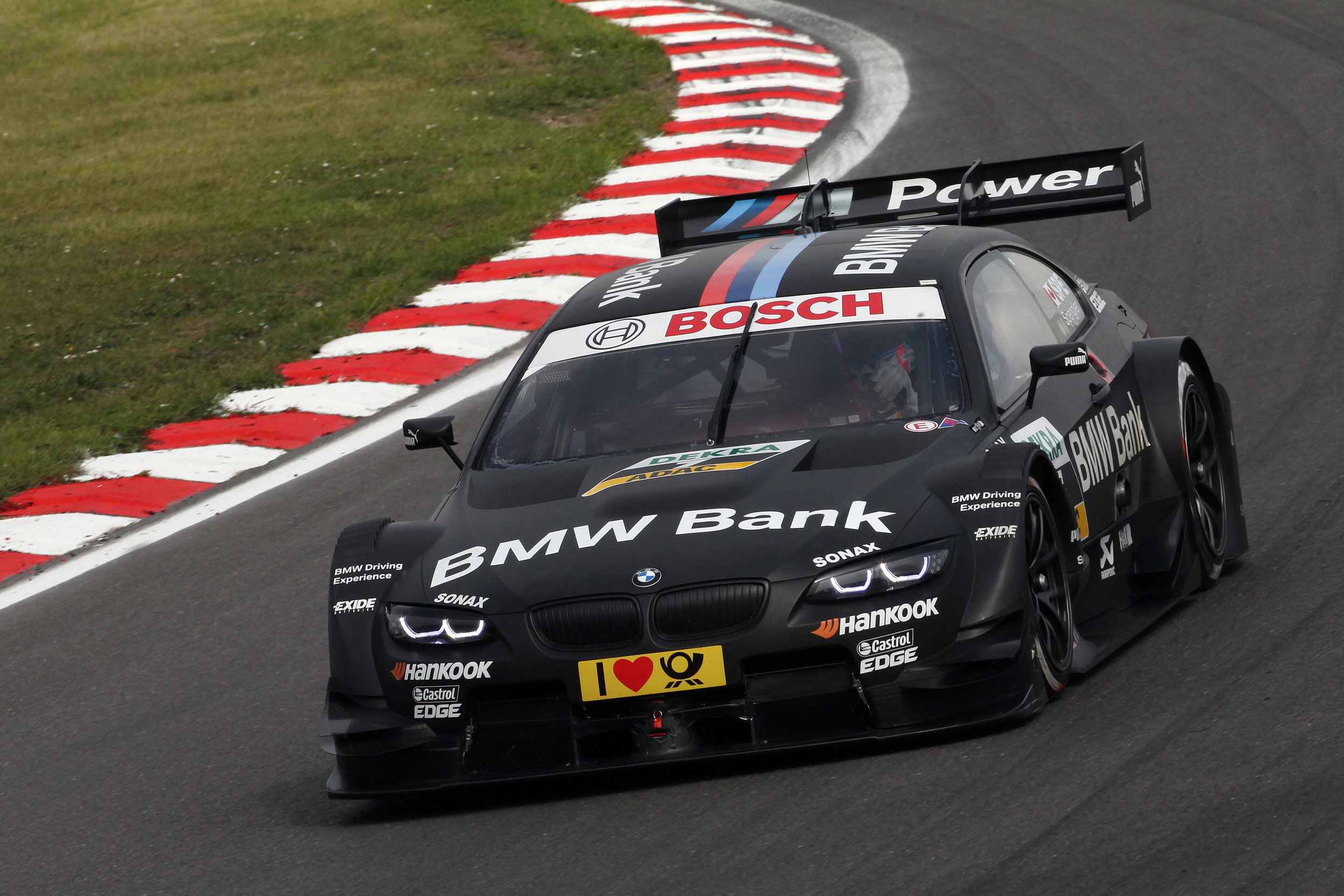
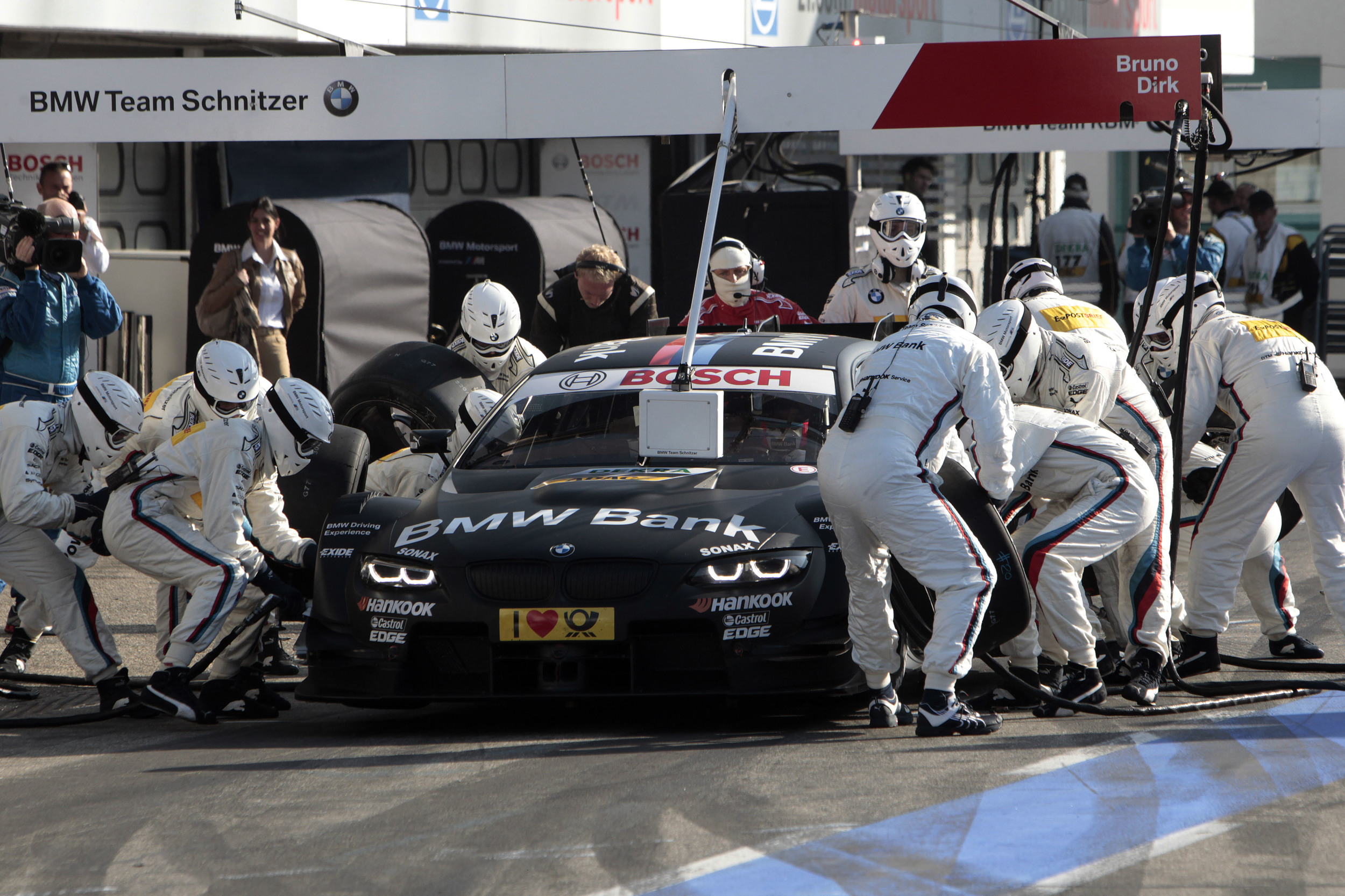
For Spengler it was a new challenge, a new team and a new vision that seemed to bring him back to his roots. He wanted to perform well, but the rookie team’s focus was on consistency rather than victories. The pressure was off. He had a number of seasons of being so close, now it was time for him to have fun.
His first race weekend surprised everyone when he qualified his BMW Bank M3 in the top 10.
“He was simply magical on his very first day at Hockenheim,” Lamm said.
Unfortunately he was involved in a race collision that saw him retire, but it gave the team an instant jolt. The following weekend at Lausitz, he claimed the pole and won.
Round three at Brands Hatch quelled any doubts in the car, and it was a welcome surprise to Bruno and the team. He qualified third and finished second, only to retire the following round at Zeltweg.
“He was simply magical on his very first day at Hockenheim.”
Points were of the essence given Mercedes-Benz driver Gary Paffett’s two wins and two podiums in the first four races. But Spengler had a chance with his M3. He came back with a third place finish in round five and a key victory at Nürburgring in round six. With just four rounds remaining, Paffett led Spengler 101-81.
Bruno made just a two point gain on Paffett at the technical circuit in Zandvoort, Holland. A victory in Oschersleben cut the deficit down by another seven with two races left.
In Valencia, Paffett was forced to retire, while Spengler finished in sixth. The drivers would return to Hockenheim for the final round and the pressure was now on Spengler to perform. He had once race left and was three points back.
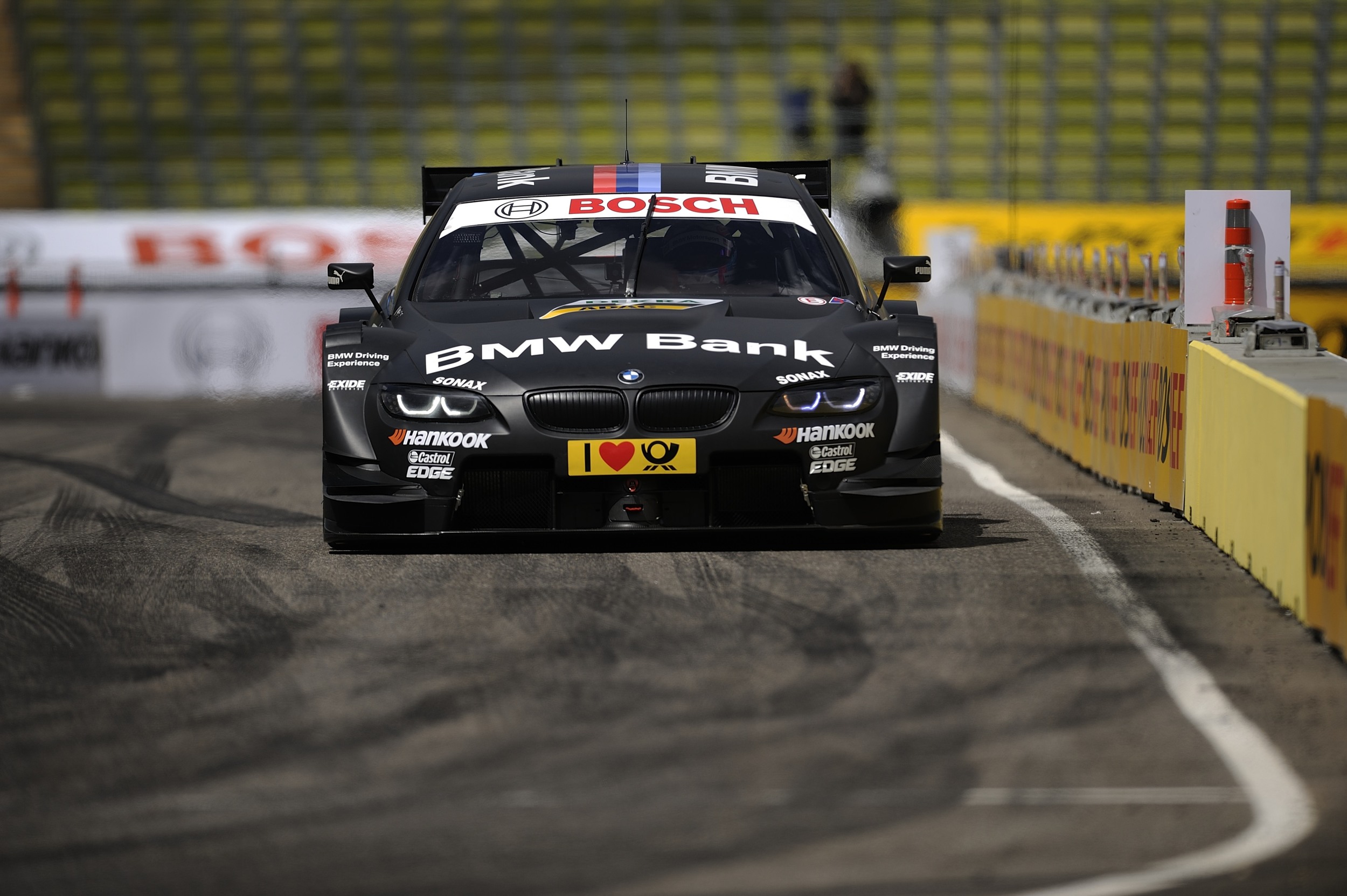
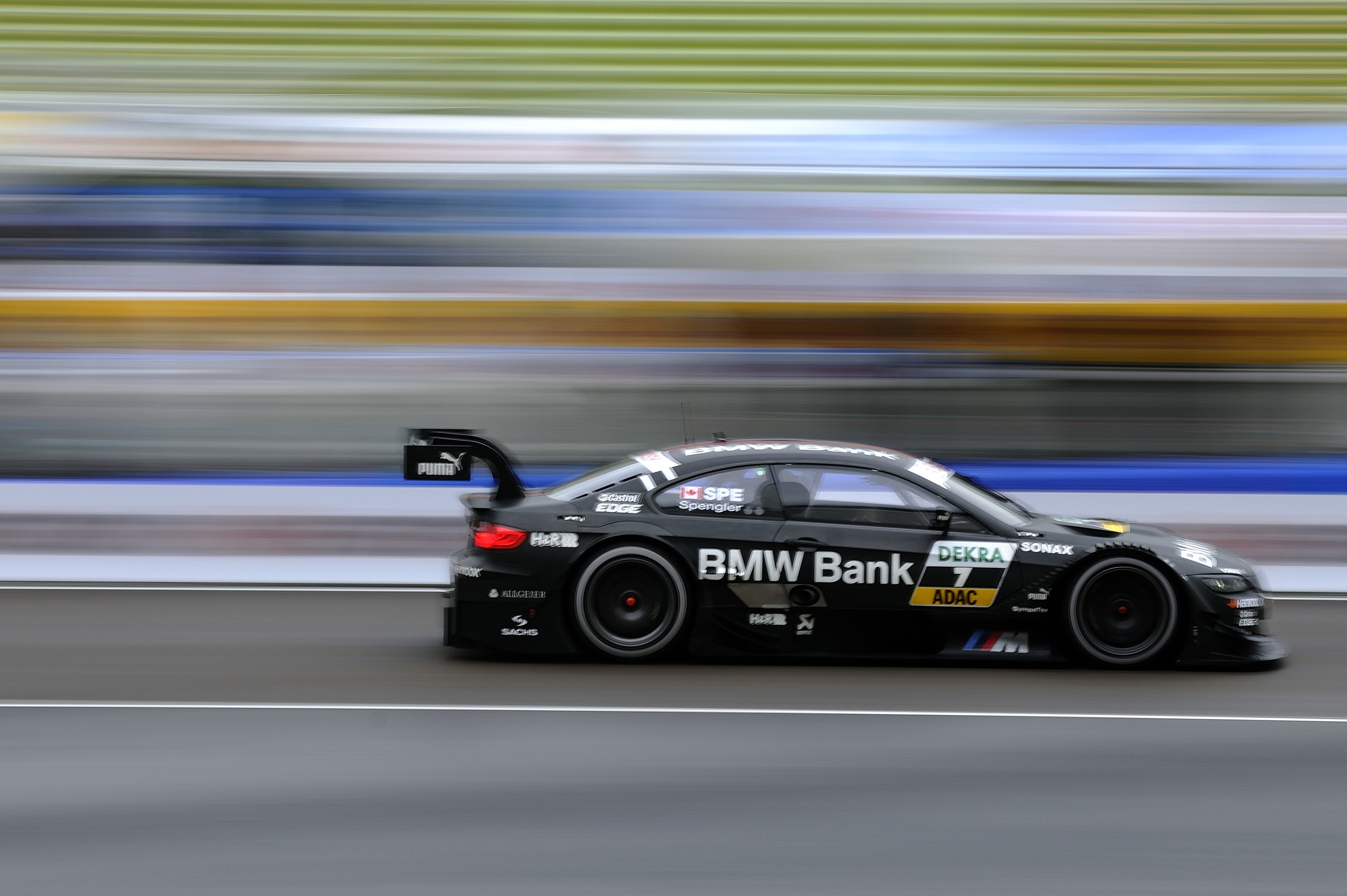
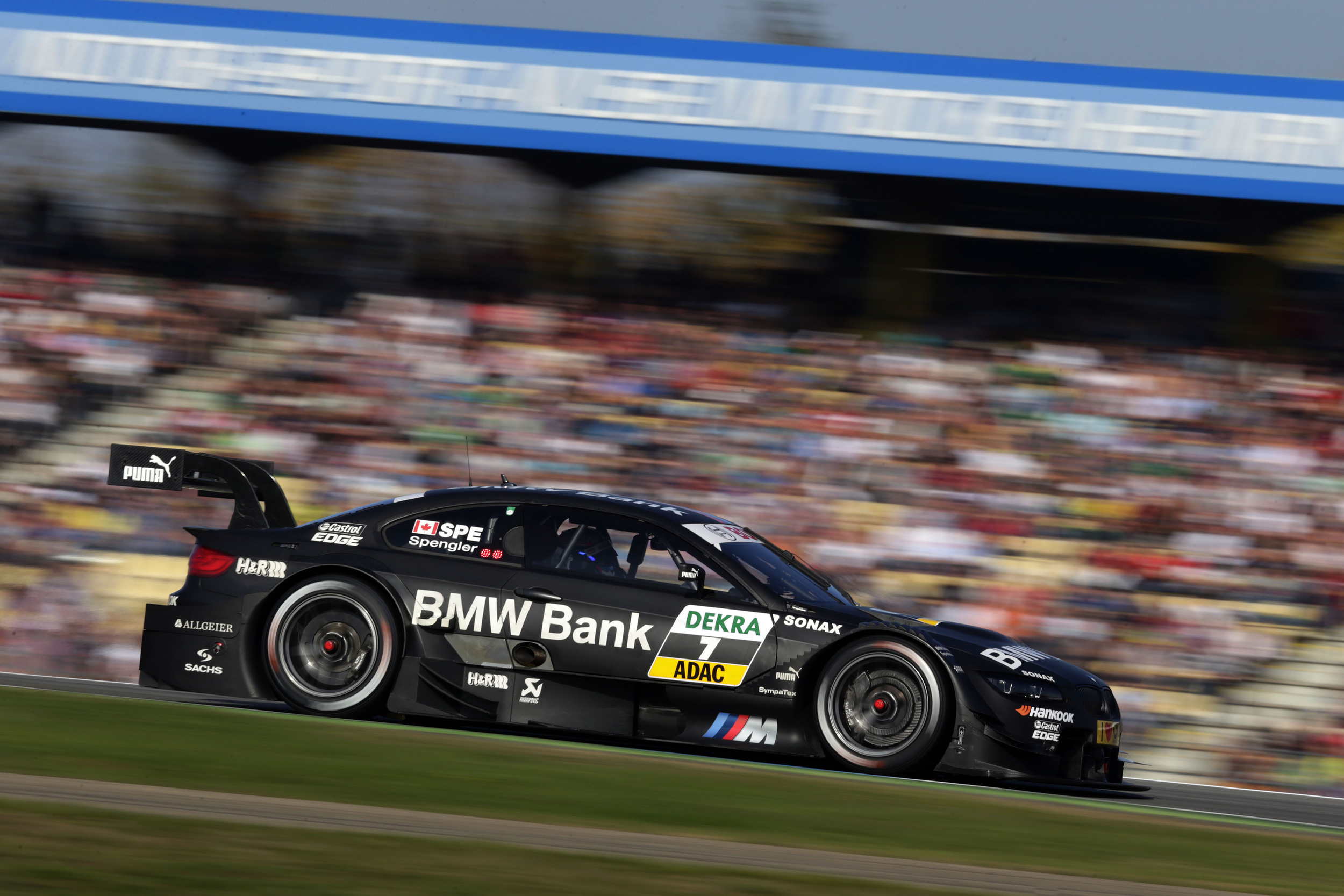
Lining up on the grid, Paffett qualified one place ahead of Spengler, and behind BMW Team RBM driver Augusto Farfus. Spengler exploded off the line ahead of Paffett, who fell behind in traffic but managed to keep pace.
By the end of the first lap, Spengler was in the lead. Paffett kept Spengler in his sights, but a vital 2.9-second pit stop late in the race by Team Schnizter ensured that Bruno would finally claim his long-awaited DTM Championship, beating Paffett by just 2.2 seconds. As Spengler crossed the finish line, fireworks erupted and he broke into a rendition of “We are the Champions.”
All of a sudden, those lost seasons didn’t matter. His career had come full circle and this time he was passing everyone in his own black BMW M3, just like his dad years earlier.
Team Schnizter wasn’t expecting to win a single race – now they have the Team Championship, Manufacturers’ Championship and are home of the first Canadian DTM Champion.
Even with his years of experience, the victory still feels surreal.
“It feels amazing. I wake up in the morning and the first thing I think about is the Championship title. Sometimes there is a little voice in the back of my head that reminds me and says, ‘Hey you won the Championship!’ At the beginning I didn’t really believe what happened. It’s been hard work. The whole team pushed hard the entire season and it’s an amazing achievement for a new team. I’m very happy in DTM and very happy at BMW. I want to win as many races as I can for them. It’s a very hard series and it just shows what a great group of people they are.”
Finish line Q&A with Bruno Spengler
Jordan Lenssen: What significance does your helmet have for you?
Bruno Spengler: I designed it years ago when I was driving go karts. It has always included my favourite colours and the maple leaf. On the back I have a disco dancer an old sponsor allowed me to keep because I like the logo.
Racing with and against some of the most well-known names in motorsport, who has been your biggest influence in DTM so far?
BS: It was great having Mika Häkkinen as a teammate. Jean Alesi is also very nice and very fast. The person that impressed me the most in DTM is Berndt Schneider because he is a five-time champion. He is amazing, he’s fast and he’s a great guy.
Would you ever consider racing in the 24 Hours of Le Mans or Nürburgring?
BS: Ya why not?! If it doesn’t clash with a DTM race I would be very interested.
Who are your favourite athletes/drivers?
BS: When I was younger I read a book about Gilles Villeneuve and I really liked him and his commitment. I like Michael Schumacher — he is one of the best drivers for me. I’m also a big fan of Roger Federer, he’s actually from the city (Oberwil, Switzerland) I live in now!
We’ve had people refer to DTM as ‘Germany’s NASCAR.’ What are your thoughts on that?
BS: I’d agree with that. On big race weekends we have nearly 150,000 people come out. Our cars are regulated for an even playing field, we have carbon brakes, a lot of aerodynamics, 480 hp engines and the cars are very light. You can definitely compare this with NASCAR.
Do you think the DTM will ever hold a race in North America?
BS: I heard there were talks, but I don’t know exactly what came out of them. My dream is to race DTM in Montreal. We’ll see in the next few years.


